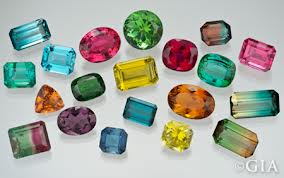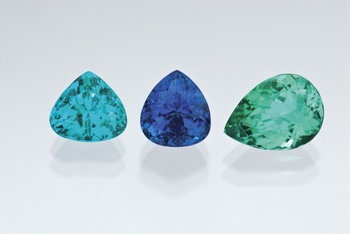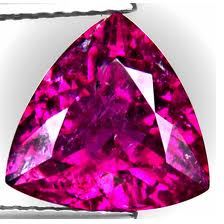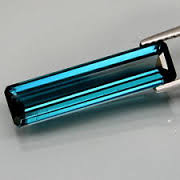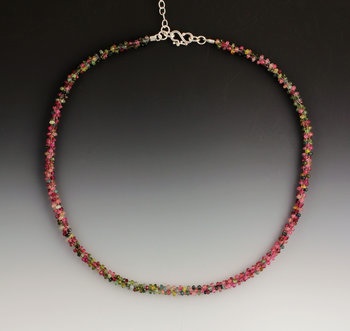Tourmaline is the birthstone for October & truly comes in almost every color of the rainbow: all shades of pink, red, blue, green, yellow & gold, as well as bi- & tri-color specimens. Tourmaline is always included to varying degrees & the clarity frequently becomes a secondary consideration compared to the color & size of a given stone.
Some of the most valuable varieties are:
Pariaba. True Pariabia’s come from Brazil & contain copper that makes the stones seem to glow. There is some African (Mozambique) material out there also contains copper, but since most Pariabas are very pricey, be sure to get a certificate stating the origin when you get to this price point. Colors range from pale “pool water” blue to intense green & very rarely violet. Retail price of stones less than 1 carat is usually $2000 & up. Expect to pay $10,000-20,000 or more per carat for larger stones.
Rubellite. This is a distinctive red with magenta undertones colored stone that resembles fine ruby. Good specimens retail at $500-1000/ct or more in the 1-5 carat range.
Indicolite. A very specific deep blue color with very little to no hint of green. Expect to pay $200-1000/ct for stones less than 2 ct. Indicolites commonly form very long crystals & are often cut into extremely long emerald-cut shapes that are not only very expensive, but also fragile if not set carefully.
Smaller stones are often sold in strings of variagated colors. Check out my affordable “Rosy Outlook” necklace of fine mostly pink & green tourmalines finished in Argentium® sterling silver.
There are also crystals than are formed with 2 or 3 distinct colors, such as “watermelon” tourmaline, but we’ll cover that in another post on multi-colored stones.

